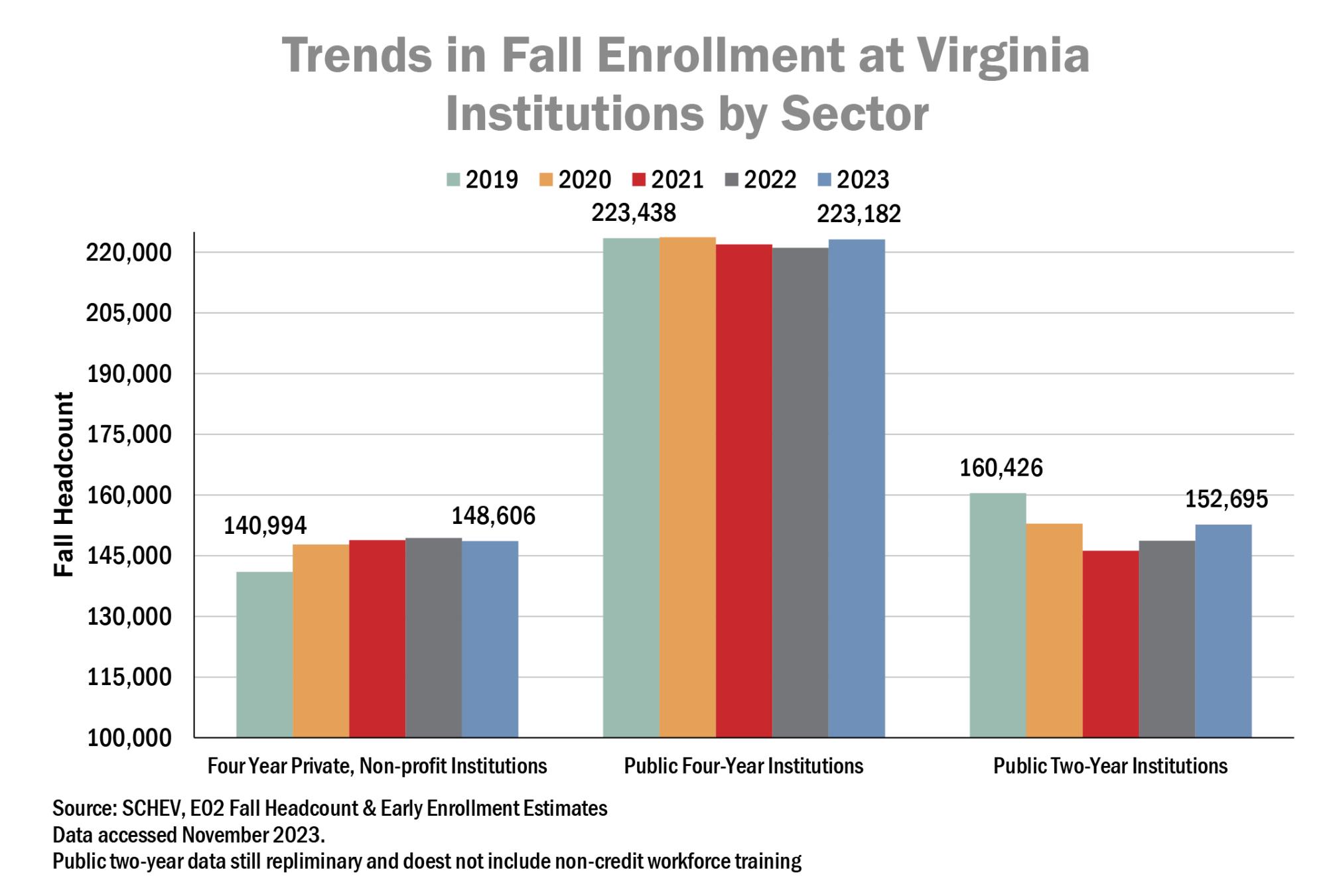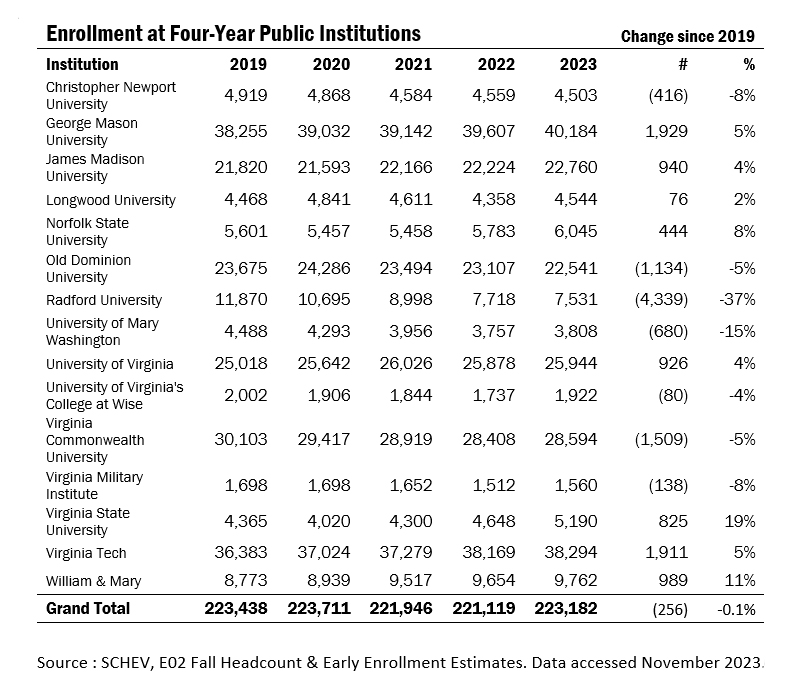Enrollment at Virginia’s colleges and universities this fall largely recovered compared to 2019, before the COVID-19 pandemic disrupted education around the world. In fall of 2023, institutions reported 524,483 students enrolled, 375 or 0.07% fewer than in 2019. These counts include in-state and out-of-state students, public and private institutions, students pursuing all degree levels and those enrolled part-time. As always, enrollment varies by many parameters especially by institution and SCHEV encourages readers to explore the data by these parameters and others on research.schev.edu.

The number of students enrolled at public four-year institutions this fall is roughly the same as before the pandemic in fall 2019. Enrollment at private non-profit institutions exceed 2019 levels by about 5% while the public two-year institutions (community colleges and Richard Bland College) are down roughly 5%.
The data for the community colleges are still estimates, as they have shorter terms that begin later in academic year. The community college data also does not include students participating in FastForward, the non-credit workforce training that leads to an industry-recognized credential. Enrollment in that program has been steadily increasing, even through the pandemic.
A student body is made up by returning students (either continuing at the same institution or by transferring to a new one) and by first time in college (FTIC) students. Looking at FTIC students can be helpful in projecting future trends. Over 1,400 more FTIC students started programs at four-year institutions in 2023 than in 2019, evenly split between the four-year public and privates. If retention rates hold and these new students continue their education, we can expect continued stability in enrollment in the near-future.
The number of undergraduates remains below 2019 levels, however they have increased each year since 2001. This follows a similar trend nationally, where undergraduate enrollment increased 2 percent compared to last year.
At the institutional level, enrollment fluctuates at institutions and comparing to 2019 levels is just one benchmark of comparison. For instance, fifteen out of seventeen four-year public institutions saw enrollment gains compared to 2022. However, the variation in recovery since 2019 by institution is noteworthy. Eight out of the seventeen institutions (counting the community college system as one institution) have increased enrollment compared to 2019. Historically Black Colleges and Universities VSU and NSU, which each saw declines during the pandemic are now 19% and 8% above pre-pandemic levels. Radford University has seen the steepest declines, down 37% compared to 2019 levels. UVA-Wise is down 4% compared to 2019, but saw significant annual increase, driven in part by out-of-state students.

Policy Implications
SCHEV has been focused on the policy implications of challenges and opportunities facing enrollment. After all, the overarching goal of Pathways to Opportunity, the statewide strategic plan for Higher Education is for 70% of working-aged Virginians to have a postsecondary degree or credential. Achieving that will require continued enrollment and persistence in Virginia’s institutions.
At the October meeting, Council approved a resolution directing SCHEV staff to replace the existing aggregate collection of application and admission data with a person-level collection beginning in Spring, 2025, allowing SCHEV to better understand patterns in applications and enrollment. The Council also discussed a number of other policy options, including creating an advisory committee to monitor enrollment factors and trends, providing flexibility in out-of-state student enrollment and pricing, as well as investments in access strategies like coaching and advising. These strategies, including high-touch and near-peer advising, have been associated with higher rates of college enrollment.
Looking ahead, Virginia expects a 1% decline in high school graduate population between 2019 and 2030, further putting pressure on enrollment. This decline, sometimes referred to as the “enrollment cliff” is lower than the national average and some neighboring states. SCHEV also recently published a manual on the decision making of students and families which is available here.
Welcome to Insights, SCHEV's platform to interpret and communicate data and policy with the overall goal of informing policy-making, engaging institutions and drawing attention to these resources. Centered around SCHEV's nationally leading data collection, each Insight will visualize complex ideas and help inform funding and policy decisions.
